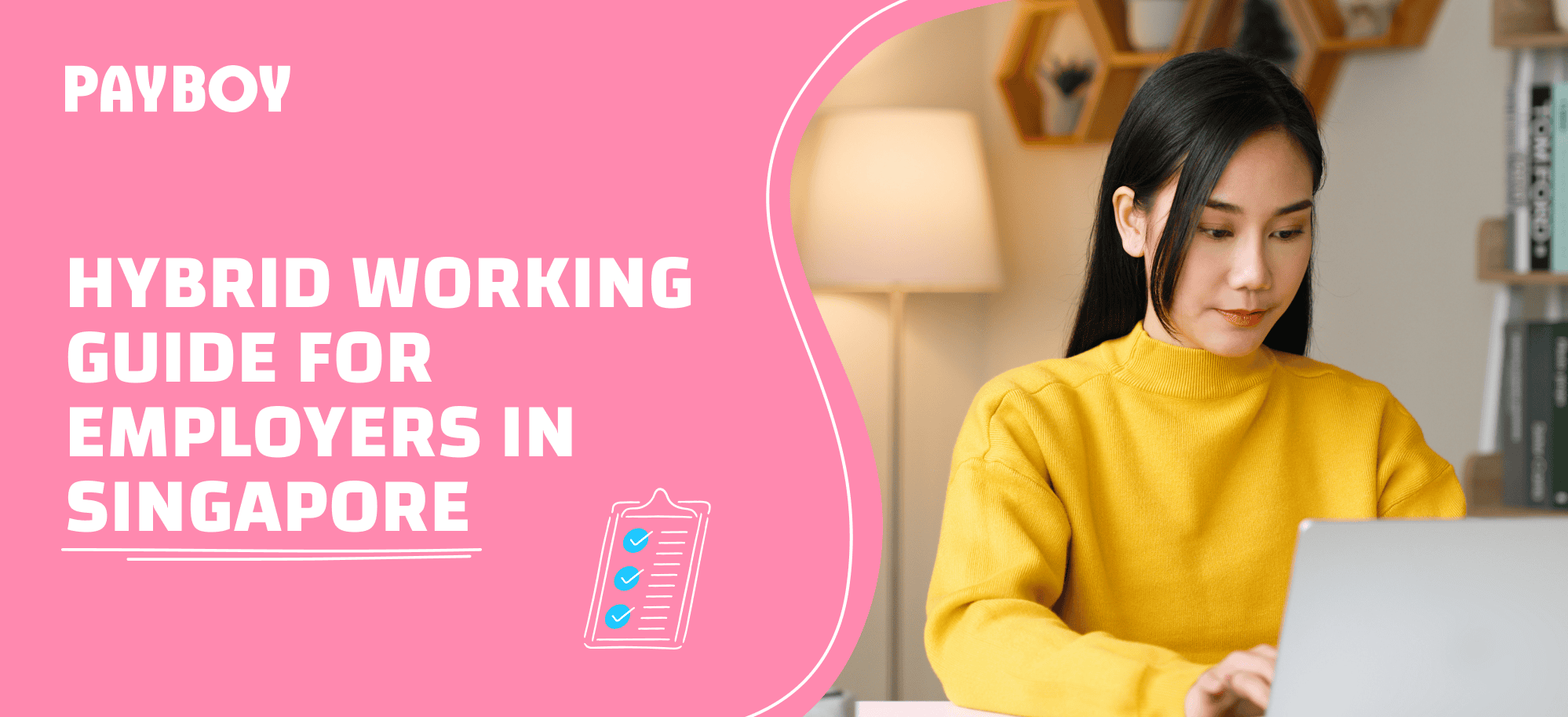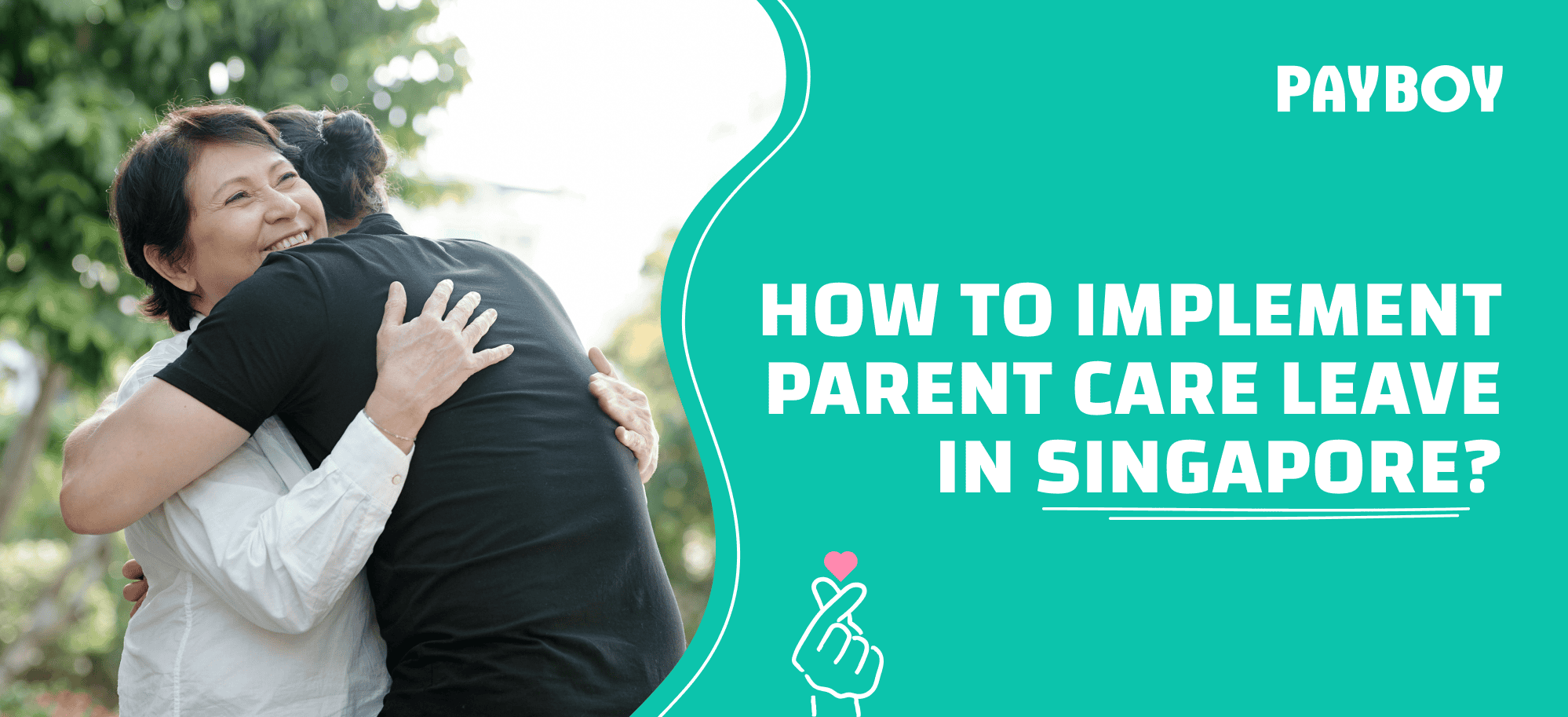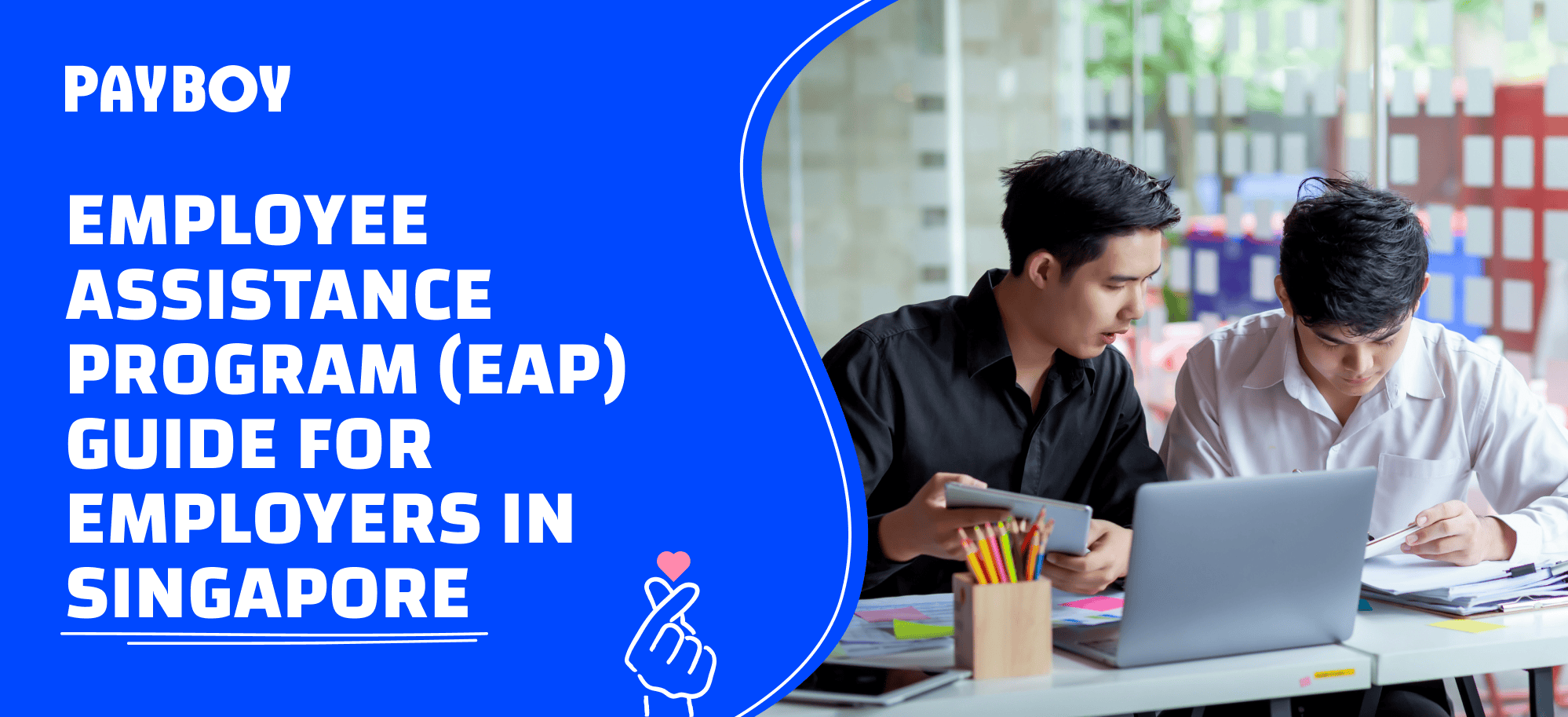Hybrid working is a product of evolving global trends in workplace flexibility and digital transformation. In Singapore, where businesses operate in a tech-driven landscape, hybrid models have proven beneficial for adapting to employees’ expectations of flexibility and work-life balance. Beyond offering choice, hybrid work also supports Singapore’s competitive talent market by attracting skilled professionals who value flexibility. However, setting up a successful hybrid work model requires careful planning and a keen understanding of its potential challenges. This guide provides employers in Singapore with actionable insights to implement and manage a hybrid workforce effectively.
What is a hybrid working meaning?
Hybrid working is a flexible work arrangement where employees split their time between working remotely (such as from home) and working on-site at a physical office. It combines the benefits of both in-office and remote work, allowing employees to enjoy a balance of collaboration and independent work.
The Singaporean government has also shown strong support for hybrid and remote working through initiatives that encourage Flexible Work Arrangements (FWAs), making it an opportune time for employers to adopt hybrid models. Learn deeper in our “Flexible Working Arrangements (FWAs) guide for employers in Singapore” to implement the policy mindfully.
Does hybrid working represent the future of work?
Yes, hybrid working is widely regarded as the future of work due to its ability to combine the best aspects of remote and on-site work, aligning with modern workforce expectations and business needs. Here’s why hybrid working is increasingly seen as the way forward:
- Shifting workforce preferences
Modern employees, especially Millennials and Gen Z workers, place a high value on flexibility and work-life balance. Hybrid working caters to these preferences by allowing employees to choose work arrangements that suit their personal and professional needs. Surveys also consistently show that employees are more satisfied and productive when given the flexibility of hybrid work, with many considering it a non-negotiable part of employment.
- Enhanced productivity and performance
Research has demonstrated that employees in hybrid settings often perform better than their fully remote or on-site counterparts. By enabling people to work in their most productive environments, hybrid models reduce distractions and enhance focus. Employees may complete focused tasks at home and collaborate on creative projects in the office, optimising their workflow.
- Cost-effectiveness for businesses
Hybrid working can significantly reduce operational costs for organisations. With fewer employees in the office daily, companies can downsize office spaces, reduce utility costs, and even explore co-working spaces. Some businesses are adopting flexible office spaces, or “hot desks,” where employees book desks as needed.
- Support for talent attraction and retention
In competitive talent markets like Singapore, hybrid working is a key differentiator for attracting top talent. Candidates are more likely to choose employers who offer flexibility, and existing employees are less likely to leave organisations that provide hybrid options. Companies with hybrid policies are reporting lower turnover rates and improved employee engagement.
- Business resilience and continuity
The hybrid model has shown its resilience during disruptions, such as the COVID-19 pandemic. Businesses with hybrid frameworks can quickly adapt to challenges like lockdowns, ensuring continuity without sacrificing productivity. Hybrid working allows for seamless transitions between remote and on-site setups, providing stability during unforeseen circumstances.
Exploring the different types of hybrid work models
Understanding the structure of hybrid work can help you choose a model that fits your business needs. Here are three common hybrid work structures:
- Office-first Hybrid: In this setup, employees are primarily based in the office with designated remote days. Suitable for roles that need frequent in-person collaboration, such as finance, marketing, or project management, this model offers flexibility while preserving a structured office environment. However, it may limit flexibility for those who prefer remote work.
- Remote-first Hybrid: Here, remote work is the default arrangement, with occasional office meetups for essential meetings. This model works well for companies in tech, creative industries, and other sectors where employees can perform tasks independently. It allows greater autonomy but may require more tools to foster communication and prevent isolation.
- Flexible Hybrid: In this model, employees can choose where they work based on personal preference or specific tasks. Ideal for companies with a diverse workforce, this approach offers maximum flexibility and empowers employees but requires robust digital infrastructure and strong self-management skills among employees.
Advantages and limitations: Each model offers unique benefits, such as improved collaboration in the office-first hybrid and greater autonomy in the remote-first hybrid. However, each model has its challenges. Employers need to consider how these structures align with their company culture, operational requirements, and employee expectations.
The key benefits of hybrid working
A well-implemented hybrid work model can bring substantial benefits to organisations in Singapore:
- Boosting employee satisfaction and retention
Hybrid work appeals to employees who seek a better work-life balance. In Singapore’s competitive job market, offering hybrid options can lead to higher job satisfaction and employee retention, as employees appreciate the freedom to manage their personal and professional lives.
- Access to a broader talent pool
Hybrid working allows employers to expand their hiring reach. By offering flexible working options, companies can attract talent across Singapore, including candidates who may be unable to commute daily. This diversity strengthens the team and supports a range of perspectives and skills.
- Operational cost savings
With fewer employees needing daily office space, companies can reduce rent and overhead costs, potentially even opting for co-working spaces or smaller office setups. These savings can be redirected towards employee development, technology, or other areas that further enhance business growth.
- Enhanced productivity and focus
A hybrid model lets employees work in environments where they feel most productive, often resulting in increased efficiency. Research shows that employees in hybrid setups can experience greater focus and motivation, as they can avoid commute time and reduce office distractions.
5 Practical tips to address hybrid working challenges
While hybrid work offers numerous advantages, it also presents unique challenges. Here’s how employers can tackle them:
Tip #1: Fostering effective communication across remote and on-site teams
In hybrid setups, communication can suffer due to physical distance. To bridge this gap, establish clear communication protocols. Adopt collaboration tools like Slack, Microsoft Teams, or Zoom, and set guidelines for communication frequency, response times, and availability. Encourage regular team meetings to ensure everyone stays connected and informed.
Here at Payboy, 40% of our team is based outside of Singapore, in countries such as Malaysia, Pakistan, Indonesia, Vietnam, etc. Thus, here is a guide on our top 10 collaboration tools to manage remote working models effectively!
Tip #2: Strengthening company culture and team bonding
Maintaining a strong company culture can be difficult when employees work from different locations. To foster a sense of belonging, organise virtual team-building activities, in-person gatherings, and company-wide events. Celebrate milestones, acknowledge achievements, and keep everyone aligned with the company’s mission and values.
Explore 25 fun team building activities in Singapore curated by us to inspire you in planning the adventurous yet memorable team bonding day!
Tip #3: Maintaining data security and privacy compliance
Data protection is a top priority in a hybrid setup, particularly under Singapore’s Personal Data Protection Act (PDPA). Use secure devices, VPNs, and encrypted storage solutions to protect sensitive information. Train employees on cybersecurity practices and require two-factor authentication to safeguard data against unauthorised access.
Tip #4: Managing and monitoring employee performance
Hybrid work can make performance monitoring challenging. Transition to performance-based metrics that focus on outcomes and results rather than hours spent online. Conduct regular one-on-one meetings to discuss goals, provide feedback, and ensure that employees remain engaged and productive.
Besides monitoring employee performance, employers must also design an effective performance appraisal for future growth and improvement. When employees hit a rough patch or struggle to meet expectations, employers can also use a Performance Improvement Plan (PIP) to guide them back on track. Discover more insights on how to create an impactful plan for your team in our “Performance Improvement Plan (PIP) guide”.
Creating a comprehensive hybrid working policy
A well-defined policy is essential to ensuring consistency across your hybrid workforce. Here’s what to include:
Step #1: Developing clear guidelines for hybrid work
- Define work hours and location expectations: Specify which roles or departments are eligible for hybrid work and outline the minimum days employees are expected to be on-site. For example, you may set up core office days for in-person collaboration (e.g., Tuesdays and Thursdays) and allow remote work on other days.
- Establish communication protocols: Create clear guidelines for team communication, including preferred platforms (like Slack for daily updates and Zoom for meetings). Set expectations around response times and availability, particularly during core work hours, to foster accountability.
- Offer home office setup support: Provide employees with a checklist for an ergonomic home office and offer support through allowances or resources. For instance, allocate a budget for purchasing office essentials such as ergonomic chairs or monitors to improve comfort and productivity.
- Create an FAQ document: Include answers to common questions about hybrid working to streamline the policy and make it easy for employees to understand. Cover topics like leave management, work hour flexibility, and meeting etiquette.
Step #2: Ensuring compliance with Singapore’s MOM regulations
Singapore’s Ministry of Manpower (MOM) has specific standards that flexible work arrangements must meet, including health, safety, and employee rights.
- Review MOM’s Flexible Work Arrangement guidelines: Familiarise yourself with MOM’s policies, particularly on workplace safety, leave entitlements, and well-being. Make sure your hybrid work policy aligns with these requirements to avoid potential compliance issues.
- Include provisions for leave and employee well-being: Ensure your policy outlines how leave (e.g., sick leave, annual leave) applies in a hybrid setup. For instance, specify whether medical leave taken during remote days requires any specific documentation and remind employees of their entitlements.
- Provide occupational health support: Highlight provisions for work-related health and safety support, including mental health services or wellness programs. This could involve offering access to virtual counselling or stress management workshops as part of a holistic approach to well-being.
- Conduct regular policy reviews: Plan to review your hybrid work policy at least biannually, adjusting for changes in MOM regulations or company needs. Designate an HR representative to monitor regulatory updates and ensure ongoing compliance.
Step #3: Setting up health and safety measures for remote and on-site work
Maintaining health and safety standards is essential for both remote and office environments. Ensure your employees are supported regardless of where they work.
- Develop ergonomic guidelines: Create a resource that includes ergonomic tips for home office setups, such as ideal screen height, chair support, and lighting. Share these guidelines with employees and consider including video tutorials or webinars on best practices.
- Offer financial support for home office equipment: If feasible, provide a stipend or reimbursement for home office essentials like desks, ergonomic chairs, or noise-cancelling headphones. This financial support can prevent strain-related injuries and promote better work quality.
- Maintain safety standards for on-site workspaces: Ensure that the physical office complies with safety and health regulations. Regularly inspect office setups, sanitise common areas, and provide essentials like hand sanitisers and face masks. Assign a safety officer to address any concerns that arise.
- Conduct regular health and safety check-ins: Periodically survey employees to understand any health or safety challenges they face in hybrid work settings. Use the feedback to make adjustments or provide additional support, ensuring all employees feel secure and valued.
3 aspects to measure the success of hybrid working model
To ensure the effectiveness of your hybrid working, regularly assess its impact on your organisation:
- Identifying key performance metrics
Monitor productivity, engagement, retention rates, and operational costs to gauge the hybrid model’s effectiveness. These metrics provide insights into how well the model supports organisational goals.
- Collecting continuous feedback from employees
Gather regular feedback through surveys or informal check-ins to understand employee sentiments and experiences. This feedback can help you identify and address areas of improvement to keep employees satisfied and productive.
- Adjusting the hybrid working model based on performance insights
Use performance data and feedback to refine your hybrid work policy. Adaptation and flexibility are crucial for maintaining a model that supports both organisational growth and employee well-being.
How to choose the right technology tools to support my hybrid workforce?
Effective hybrid work relies on strong technological support. Here’s a look at essential tools to consider:
- Optimising HR Management with HRMS solutions
Human Resource Management Systems (HRMS) like Payboy help automate HR processes such as payroll, attendance, and compliance. With remote attendance tracking and seamless leave management, Payboy’s HRMS can simplify operations for hybrid teams and enable smooth workforce management.
- Implementing communication and collaboration tools for team connectivity
Invest in real-time communication platforms such as Zoom, Slack, and Microsoft Teams. These tools enable employees to stay connected and collaborate effectively, regardless of location, keeping projects on track and ensuring team cohesion.
- Project and task management tools for enhanced productivity
Tools like Asana, Trello, and ClickUp help track tasks and project progress, facilitating teamwork across different locations. These platforms promote accountability by setting clear deadlines and helping employees stay organised and productive.
How can you use Payboy HR software to support your hybrid working implementation?
As we move towards a more flexible and adaptive work environment, using advanced technology will be key to staying ahead in Singapore’s dynamic business landscape. Payboy HR and Payroll Software offers a robust solution to optimise your operations. Here’s how Payboy can help you manage contingent workers:
Effortlessly manage and organise employee shifts, accommodating flexible work arrangements and ensuring coverage during peak hours.
Monitor employee work hours accurately with real-time attendance data, ensuring compliance with labour laws and identifying attendance patterns.
Integrate shift scheduling and attendance data into payroll processing to eliminate errors, save time, and ensure accurate and timely employee payments.
By leveraging Payboy HR and Payroll Software, you can streamline hybrid workforce management and ensure smooth operations in compliance with Singapore’s employment laws.
Streamline your HR processes with Payboy today!
As a PSG-approved HRMS, Payboy provides a robust system to help you manage your HR tasks so that you can focus on your business and people!
With our wide range of modules, you can customise a solution to meet the specific needs of your business:
Payroll Processing | Leave Management | Claims Management | Applicant Tracking
Time Attendance | Shift Scheduling | Appraisal System | Inventory ManagementProject Costing | Training Management | Benefits





















